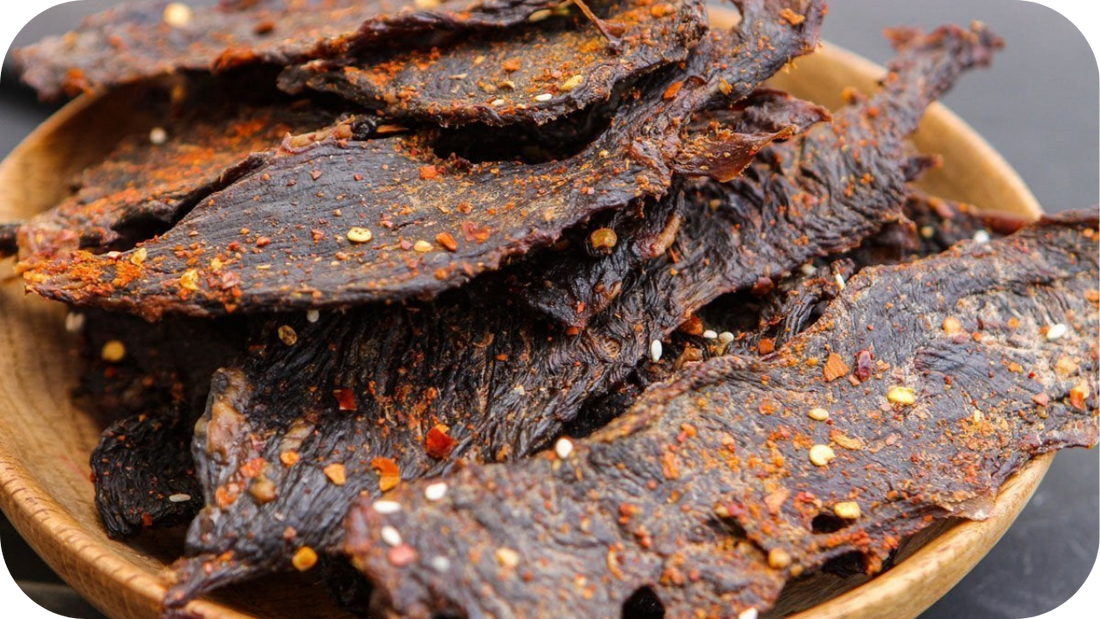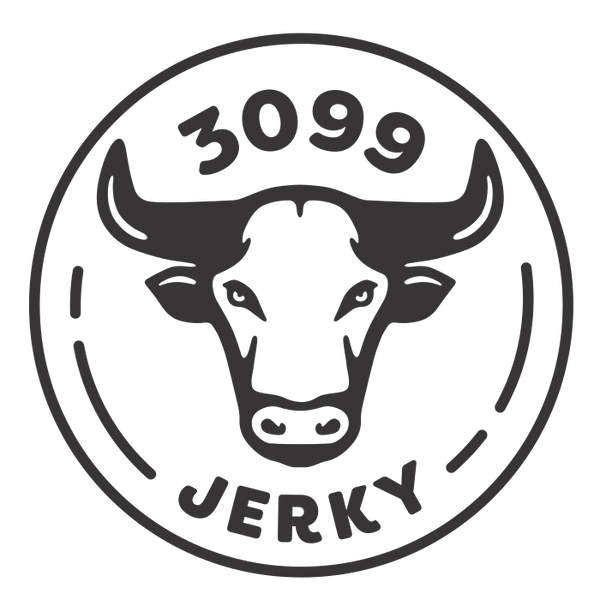
What Beef Makes The BEST Jerky - The Rundown
Share
Aussies love their jerky, but let’s be real—not all beef works. Some cuts are too fatty, too tough, or just don’t dry well.
You spend hours marinating and drying, only to end up with chewy disappointment. Either it’s rock-hard or spoils too fast. What a waste!
If you want top-tier, long-lasting jerky, you need to start with the right cut. From top round to brisket, here’s the rundown on the best beef for mouth-watering jerky.
What Makes a Beef Cut Good for Jerky?
The beef for jerky is lean, firm, and easy to slice. Fat is the enemy here—it doesn’t dry well and can spoil the jerky faster. That’s why cuts like top round, eye of round, and bottom round are top picks. They have just the right muscle and flavour balance without excess fat.
Texture matters, too. Tougher cuts work better because jerky is all about chewing. A good beef cut should have a tight grain to hold up well during drying but still bite cleanly. Slicing against the grain makes it even easier to chew.
Marinade absorption is key. You want a cut that soaks up all the good stuff—smoky, savoury, and spicy flavours—without turning mushy. Leaner cuts do this best, giving you that bold jerky flavour in every bite.
Cost and availability count, too. You don’t need an expensive cut like ribeye—go for budget-friendly lean beef that’s easy to find in Aussie butcher shops. The right cut makes all the difference between average jerky and a proper top-notch batch.
Top Beef Cuts for Jerky: Which Ones Should You Choose?

The best cuts are lean, firm, and easy to slice, ensuring they dry properly and last longer. Fat is the enemy—it doesn’t dehydrate well and can cause spoilage. That’s why leaner cuts like top round, bottom round, and eye of round are the go-to choices for most jerky makers. Below, we break down the best beef cuts for jerky so you can choose the right one for your next batch:
1. Top Round (Best Overall Choice)
Top round is hands down the best cut for making beef jerky. It’s lean, easy to slice, and has a firm texture that holds up well during drying. Since it comes from the cow's rear leg, it’s naturally tough but chews well when appropriately sliced.
The low-fat content means it won’t spoil quickly, making it a great choice for long-lasting jerky.
Another reason top round is a favourite is its price—it’s one of the most affordable cuts, so you can make large batches without spending a fortune. It also absorbs marinades well, ensuring every piece is packed with flavour. Just slice it thinly against the grain, and you’ll get a chewy yet tender bite.
2. Bottom Round
The bottom round is another top contender for beef jerky. It is slightly tougher than the top round, but it is still a solid choice. It comes from the outer rear leg of the cow and has a noticeable grain, which means it produces chewier jerky. If you like a bit more bite in your jerky, the bottom round is the way to go.
It’s also budget-friendly, making it a great option for bulk jerky-making. Because it’s lean, you won’t have to trim much fat, and it dries evenly, reducing the risk of spoilage. For the best texture, slice it thin and against the grain.
It might need a longer marinating time to soak up flavours properly, but the end result is a rich, beefy jerky with a satisfying chew.
3. Eye of Round

Eye of Round is the leanest of the round cuts, making it an excellent option for beef jerky. It has a fine grain, which gives it a smoother texture compared to top or bottom round. This means the jerky chews more easily while still maintaining a satisfying bite.
Since eye of round has almost no marbling, it dries quickly and evenly, reducing the risk of spoilage. The lack of fat also makes it one of the healthiest choices. This cut absorbs marinades well, so you’ll get a deep, bold flavour in every strip.
It’s a bit more expensive than top or bottom round, but the quality is top-notch.
4. Brisket
Brisket isn’t the first choice for jerky, but it has its fans. It’s packed with bold beefy flavour, but the challenge is trimming the fat. Brisket naturally has more marbling, which can lead to faster spoilage if not handled correctly.
If you’re using brisket, choose the leanest part, trim off as much fat as possible, and slice it very thin to help with drying. Brisket jerky has a rich, deep taste, but it can be chewier than other cuts due to its grainy texture.
Another consideration is cost—brisket can be pricier than round cuts, so it’s not the most budget-friendly option. But brisket can be a great choice if you’re after a jerky with intense beef flavour and don’t mind a bit of extra work.
5. Flank Steak

Flank steak is known for its strong beef flavour and tender texture when appropriately sliced. It’s naturally lean, making it a good choice for jerky, but it has a looser grain than round cuts. This means it chews more quickly, making it a favourite for those who prefer a softer jerky.
Flank steak absorbs marinades incredibly well, allowing for deep flavour penetration. This makes it perfect for bold, spice-heavy jerky recipes. However, it can be a bit more expensive than the top or bottom round, so it’s not always the best option for large batches.
Cuts to Avoid for Jerky
Not all beef cuts are good for jerky. Some are too fatty, soft, or dry, leading to spoilage, poor texture, or a greasy taste. Here are the cuts you should avoid:
1. Ribeye & Prime Rib
Ribeye might be great for steaks, but it’s too marbled for jerky. The high-fat content makes it hard to dry properly, leading to spoilage. While the flavour is rich, the extra fat can cause jerky to turn rancid quickly, reducing its shelf life.
2. Short Ribs
Short ribs contain too much fat and connective tissue, making them a bad choice for jerky. This cut is best suited for slow cooking to break down the tough fibres, which doesn’t work well in jerky-making. Even when trimmed, the meat remains too fatty and chewy after drying.
3. Tenderloin & Filet Mignon

These cuts are too soft and delicate for jerky. They lack the firm muscle structure needed for that classic jerky chew. The texture often becomes mushy or crumbly after drying, and considering how expensive these cuts are, they’re not worth using for jerky.
4. Chuck Roast
Chuck roast has too much marbling, meaning you’ll spend extra time trimming off the fat. It’s also more fibrous and inconsistent, making it difficult to slice evenly for jerky. While it has a bold, beefy flavour, the texture and fat content make it unsuitable for dehydration.
5. Ground Beef
Ground beef isn’t a good option for traditional jerky strips since it can’t be sliced. It’s best used for jerky sticks or patties, but even then, it needs to be extra lean (90% lean or more) to avoid greasy results. If you want a classic jerky texture, prevent beef ground altogether.
Grass-Fed vs. Grain-Fed Beef: Does It Matter?

When choosing between grass-fed and grain-fed beef, grass-fed beef stands out as the superior choice for both health and taste. Grass-fed beef is richer in omega-3 fatty acids, promoting heart health, and contains more vitamins like Vitamin E, which is a powerful antioxidant.
It also has a healthier fat profile, offering less saturated fat and more conjugated linoleic acid (CLA), linked to fat loss and improved metabolic health. Regarding taste, grass-fed beef provides a richer, more robust flavour with a leaner texture compared to the milder, fattier grain-fed variety. Furthermore, grass-fed beef is often raised in more humane and sustainable conditions, with cattle roaming freely on pasture rather than being confined to feedlots.
This method also contributes to lower environmental impact, as grass-fed beef farming produces fewer greenhouse gas emissions. Additionally, grass-fed beef typically contains fewer hormones and antibiotics, making it a cleaner and more natural protein choice.
Grass-fed beef offers a healthier, more ethical, and more flavourful option for conscious consumers.
Tips for Preparing Beef for Jerky

Getting the right cut of beef is just the first step—how you prepare it makes all the difference. The key is to remove excess fat, slice evenly, and let the meat soak up the marinade before drying. Whether using a dehydrator, smoker, or oven, following the proper process helps achieve perfect texture and taste. Below are essential tips to make sure your jerky is top-notch every time.
- Choose lean cuts – Fat leads to spoilage, so trim any excess before slicing.
- Freeze the beef slightly – Chilling it for 1–2 hours makes slicing easier and more precise.
- Slice against the grain – This ensures a tender chew rather than a harsh, stringy texture.
- Keep slices uniform – Aim for 1/8" to 1/4" thick for even drying and consistent texture.
- Use a sharp knife or meat slicer – Clean, precise cuts help the jerky dry evenly.
- Marinate for at least 12 hours – The longer the marinade time, the better the flavour absorption.
- Pat dry before dehydrating – Excess marinade can slow the drying process and make jerky sticky.
- Use the right drying method – A dehydrator, oven, or smoker at low heat (60–70°C) works best.
- Rotate and space out pieces – This helps with even airflow and prevents uneven drying.
- Test for doneness – Properly dried jerky should be firm but still bendable without snapping.
- Store properly – Keep jerky in an airtight container or vacuum-sealed bag for a longer shelf life.
Conclusion
The secret to great beef jerky is choosing the right cut and preparing it properly. Lean, muscle-heavy cuts like top round, bottom round, and eye of round make the best jerky, while fatty or overly tender cuts should be avoided.
Ready to make high-quality jerky at home? Get the best beef cuts from Carnivore Society and stock up on premium jerky from 3099—because nothing beats real, flavour-packed, Aussie-made jerky!
